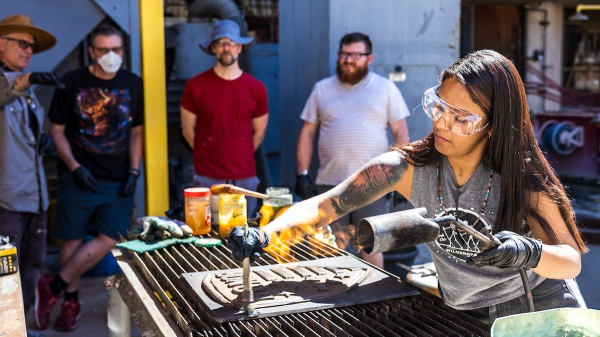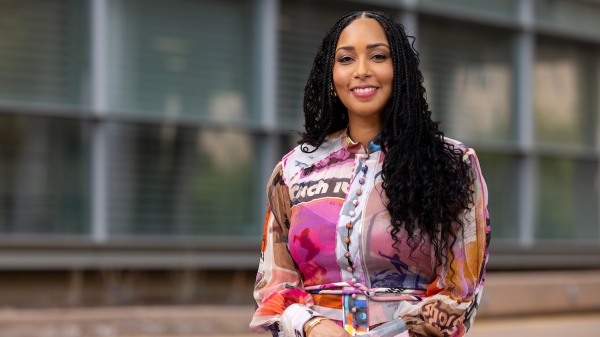ASU event to discuss American media consumption during World War II

New Bedford Theatre, 1934. Photo courtesy of Spinner Publications
You may think of Bugs Bunny and Donald Duck as the lovable cartoon characters you grew up watching in Sunday morning cartoons. But according to Kevin Sandler, an associate professor in the Film and Media Studies program at Arizona State University, during World War II these animated icons and their friends were pictured battling Nazis in short films made for military personnel.
“World War II permeated all genres of Hollywood production, perhaps unlike any time in Hollywood’s history. Certain genres arose during World War II — the combat film and the home-front dramas — but war themes abounded in established genres like the musical and the screwball comedy as well as Hollywood’s secondary products like newsreels, serials and cartoons,” said Sandler.
On Wednesday, Nov. 14, from 7 to 8:30 p.m., the College of Liberal Arts and Sciences will co-host a program with the United States Holocaust Memorial Museum titled “What Were We Watching? Americans’ Responses to Nazism Through Cinema, Radio and Media.”
Sandler will be joined at the event by Daniel Greene, a curator at the United States Holocaust Memorial Museum, and Mi-Ai Parrish, a Sue Clark-Johnson Professor for Media Innovation and Leadership in ASU's Cronkite School of Journalism and Mass Communication.
Hava Tirosh-Samuelson, ASU Regents’ Professor of history at the School of Historical, Philosophical and Religious Studies and director of the Center for Jewish Studies, said the Holocaust must be understood in its proper historical context, first and foremost in Europe and secondarily in the U.S.
“In the context of European history, the Holocaust has to be understood in terms of the long history of anti-Semitism, German history, the processes of modernity and the rise of the nation-state and nationalism. In the context of the United States, the Holocaust should be viewed more in terms of perception, namely, what was known about Nazism and the Final Solution at the time and how did Americans — including American Jews — respond to the information. America is also crucial to understanding Jewish life in the post-Holocaust years. We are now over 70 years beyond the horrific events of the Holocaust and we need to ponder how the Holocaust shaped the identity of Jews and the interpretation of Judaism,” Tirosh-Samuelson said.
While the upcoming event will look at media consumed at a specific time in history, it’s a topic very relevant to students and citizens today.
“Students today live in a culture that is saturated with images; they need to be very sophisticated interpreters of images,” Tirosh-Samuelson said. “They can’t just believe what they see, since images are easily manipulated by new technologies. The fact that you see an image or have something available on your screen in your palm doesn’t mean that image is factual. Students need to become critical interpreters of cultural imagery as well as of written texts and auditory messages.”
Tirosh-Samuelson stressed the importance of attending events such as this one to deepen understanding of the world’s history and Jewish history so as to understand their implications for current events.
“Students should come to a university not merely for the sake of earning a degree that secures employment but to acquire the skills, attitudes and values necessary for becoming responsible citizens,” Tirosh-Samuelson said. “Understanding how American media covered the Holocaust is part of that civic education.”
This event is free and open to the public, but registration is required. For more information or to get tickets, visit the United States Holocaust Memorial Museum website.
More Arts, humanities and education

Data science student investigates Arizona education system, reform through Steve Jobs Archive fellowship
Arizona State University student Brinlee Kidd was one of nine people across the U.S. chosen for the inaugural Steve Jobs Archive…

'Devils in the Metal': ASU vet leads iron cast workshop for former service members
Bruce Ward believes everyone has a symbol of strength or resilience, and they have an obligation to find it. His happens to…

ASU English professor wins Guggenheim Fellowship for poetry
The awards — and opportunities — keep piling up for Safiya Sinclair, an associate professor in Arizona State University’s…